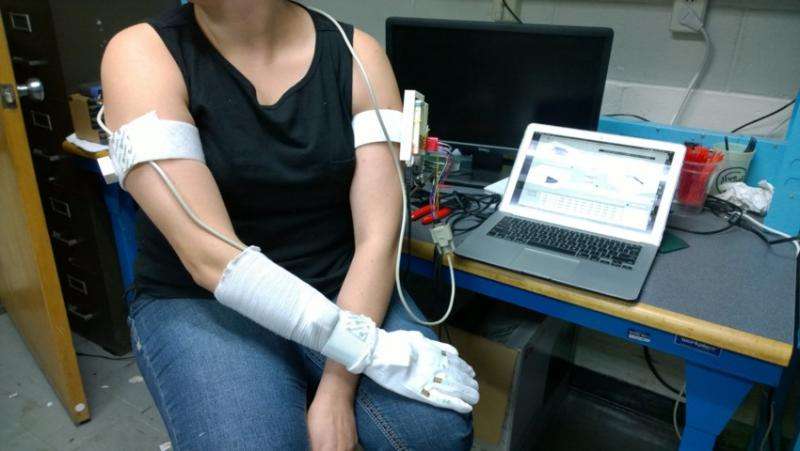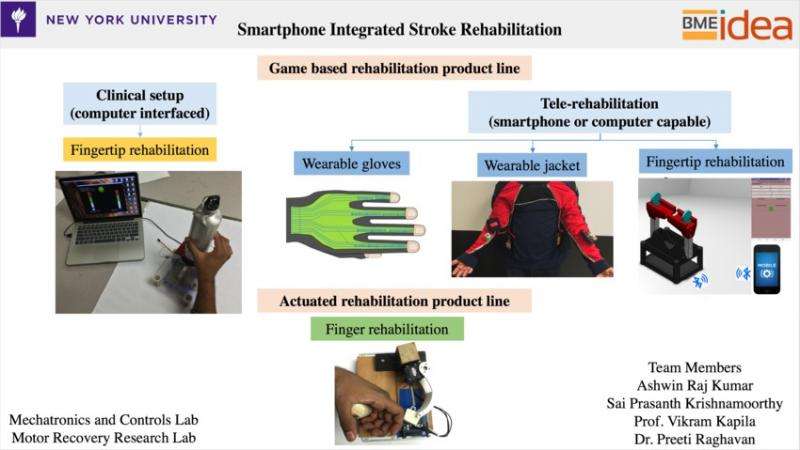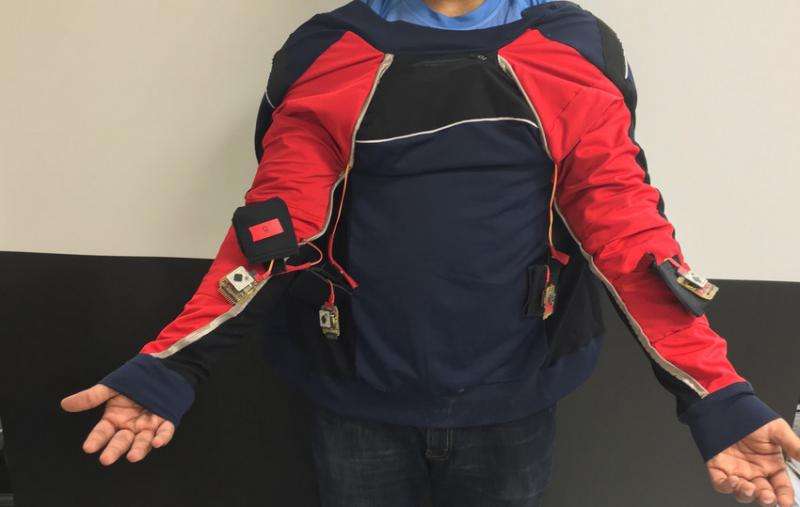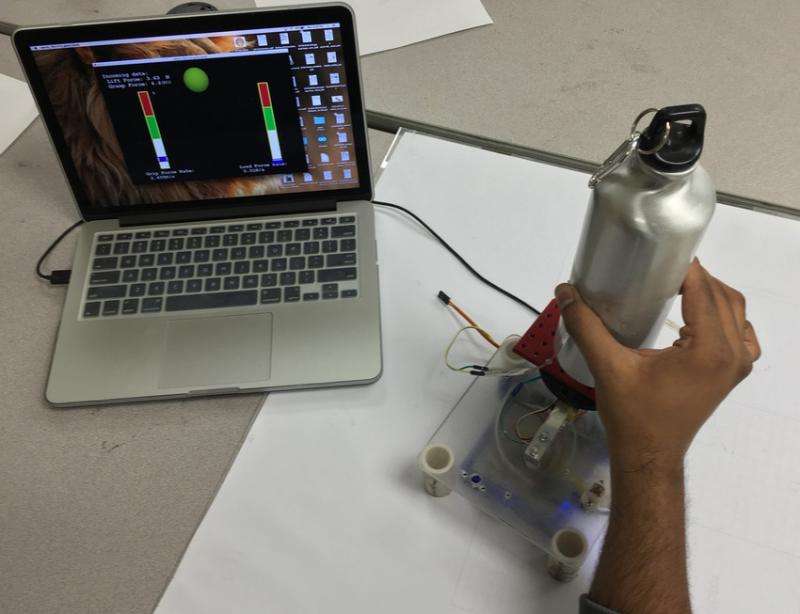Researchers devise a smarter way for stroke patients to rehabilitate

A team of students from the NYU Tandon School of Engineering is using smartphones to improve the arduous and repetitive process patients must typically undergo to relearn the basic skills they lose after suffering a stroke.
The centerpieces are wearable mechatronic devices: a jacket to measure arm placement, a glove to measure wrist and finger placement and finger joint angles, and a finger trainer built of hand-friendly, compliant material. All are connected inexpensively by a smartphone. When a patient performs an exercise assigned by a physician or physical therapist, microcontrollers quantify the action—measuring grip strength, for example—and display that information via the smartphone to both the patient and medical provider. Rather than mindlessly repeat the exercise, patients engage in a virtual reality game that allows them to observe the performance of the unaffected side of the body and mimic the same performance on the affected side.
Rehabilitation in a clinical setting renders patients dependent on caregivers and therapists, but using smartphone technology allows stroke survivors to make great strides within their own homes, boosting morale and motivating them to continue rehabilitating their stroke-related disabilities. Because the microcontrollers are attached to easy-to-wear garments, exercising can be seamlessly integrated into a patient's day-to-day activities rather than treated as a separate, unwelcome task. Additionally, the cost-effective system, which the students project will sell for under $1,000, provides measurement results correlating to existing research-standard devices selling for eight times that amount.

"Smartphone-integrated stroke rehabilitation is a marked improvement over the conventional treatment programs of the past," said NYU Tandon Professor of Mechanical and Aerospace Engineering Vikram Kapila, who guided the students. "The medical community acknowledges that while the central nervous system is highly adaptive and has the ability to regain functions with concerted effort, a patient must assiduously practice those regained skills. This makes stroke rehab a long and sometimes trying ordeal. Providing patients with immediate feedback and placing that feedback in the context of a virtual reality game that they can use within their own homes is definitely encouraging and motivational."
In addition to Kapila, who oversees NYU Tandon's Mechatronics Lab, Preeti Raghavan, M.D., of NYU Langone's Rusk Rehabilitation Ambulatory Care Center helped Ashwin Raj Kumar and Sai Prasanth Krishnamoorthy, the students who helped transform the original idea into a working prototype.
The team recently took third place in BMEidea, the nation's leading competition for biomedical and bioengineering students. The annual challenge is sponsored by VentureWell, a nonprofit higher education network that cultivates revolutionary ideas and promising inventions. The entries—each of which must pioneer a health-related technology that addresses a real clinical need—are judged on technical, economic, and regulatory feasibility; contribution to human health and quality of life; technological innovation; and potential for commercialization.

"It is an honor to place in a competition as prestigious as BMEidea," said Raj Kumar, a doctoral candidate in mechanical and aerospace engineering. "We are very grateful for the guidance and mentoring of Professor Kapila and Dr. Raghavan."
Added Krishnamoorthy, a master's degree student in mechatronics and robotics engineering: "We are also excited that our work may one day make life easier and more rewarding for the many people who suffer from strokes each year."
"I congratulate the students and their faculty mentors on this recognition," NYU Tandon Dean Katepalli R. Sreenivasan said. "This is a testament to both the fine quality of our aspiring engineers and NYU's commitment to invaluable cross-disciplinary research that allows technology to be used in service to society."
Next steps for the students include forming a company with the patent-pending technology and launching a startup at the NYU Tandon new-business incubators. They are currently refining their prototype and expect to shortly begin working with several patients from around the world including their native India.


















